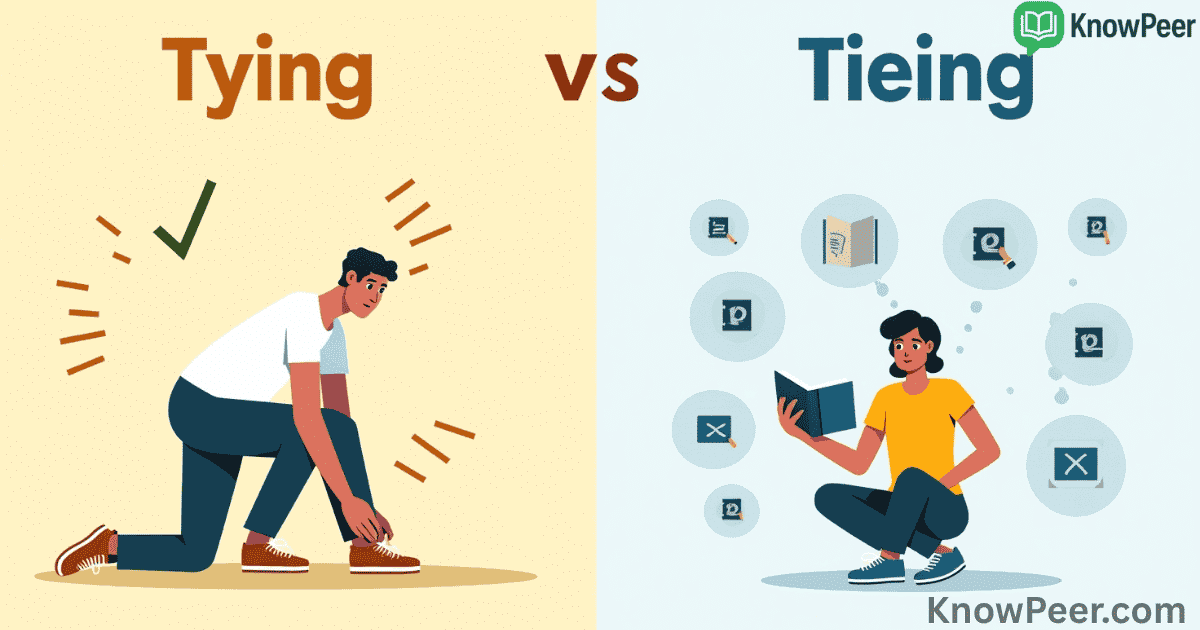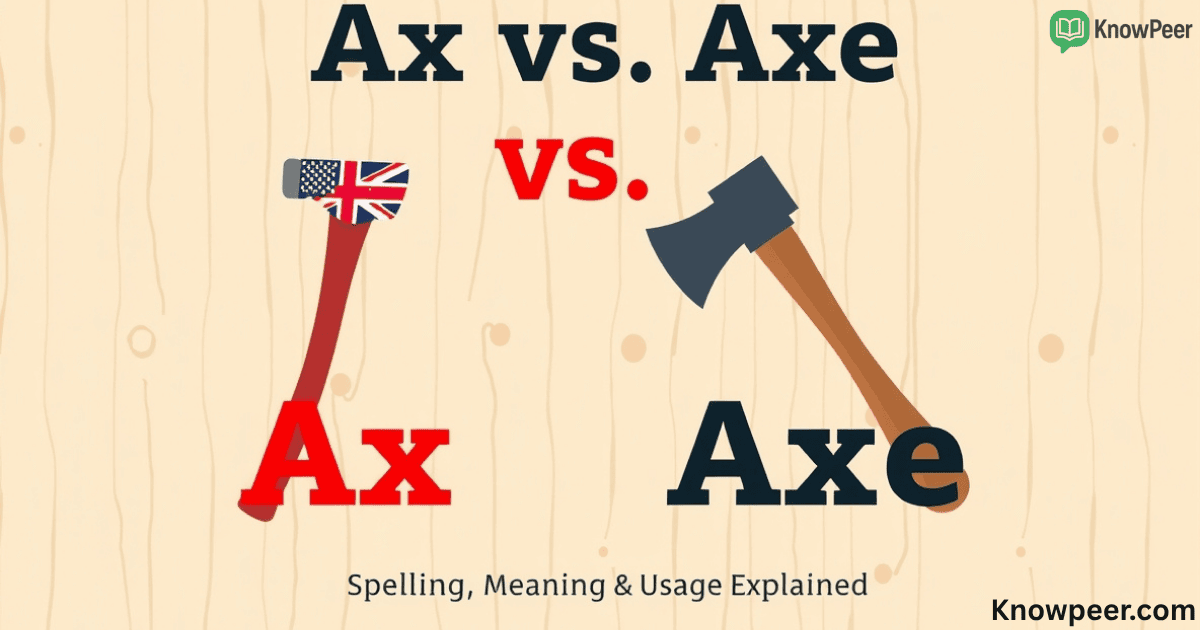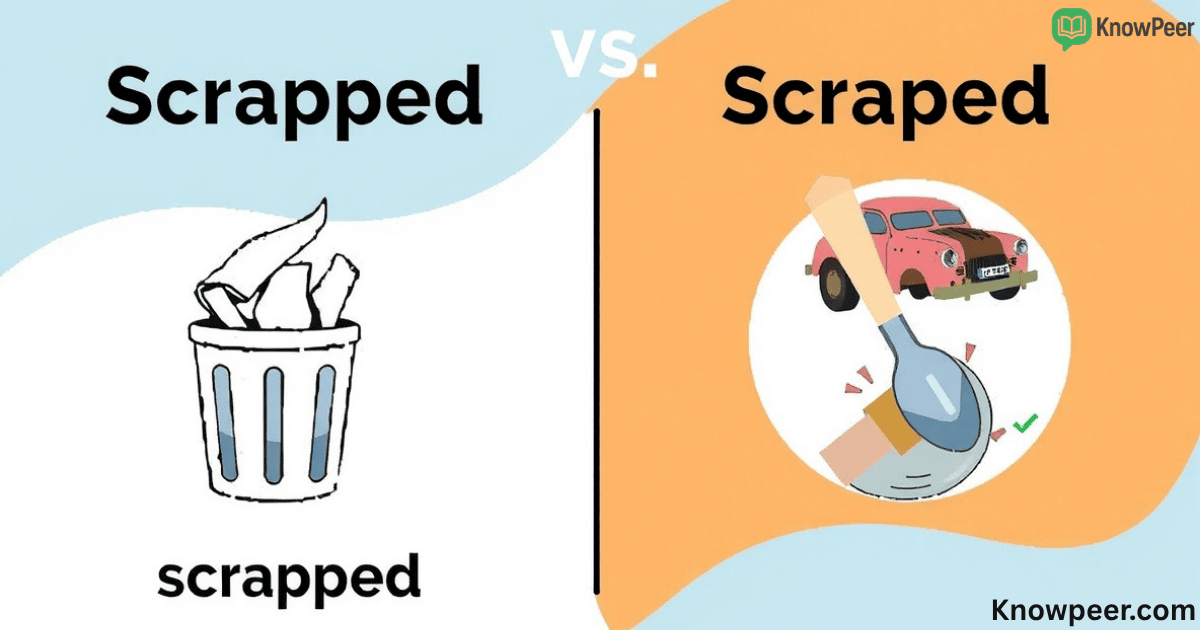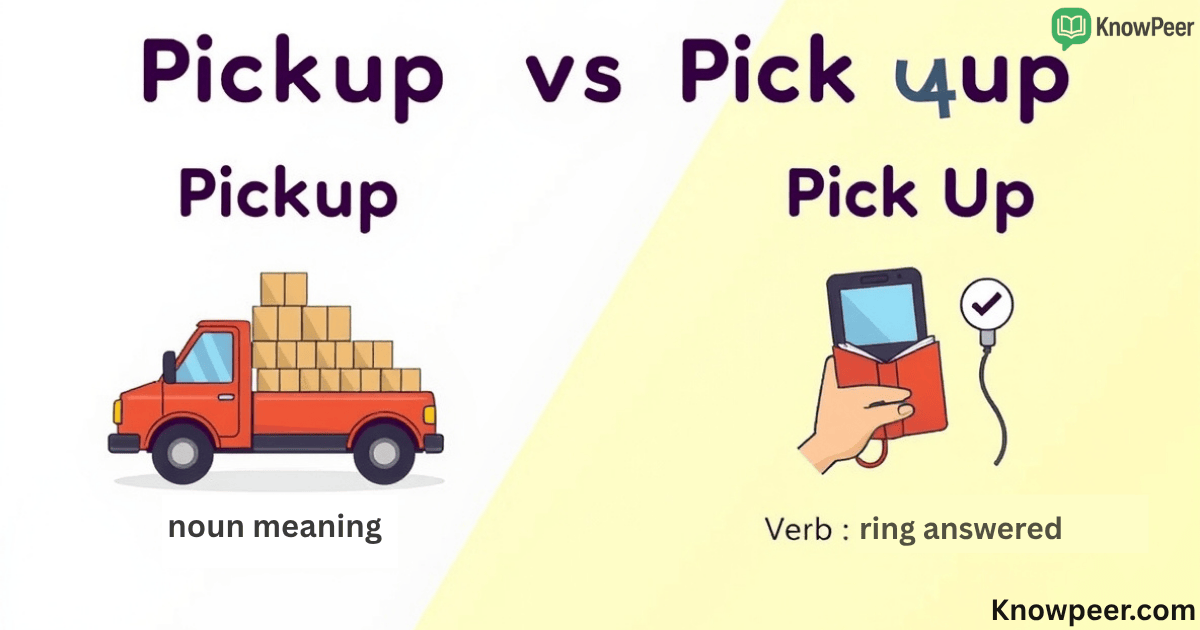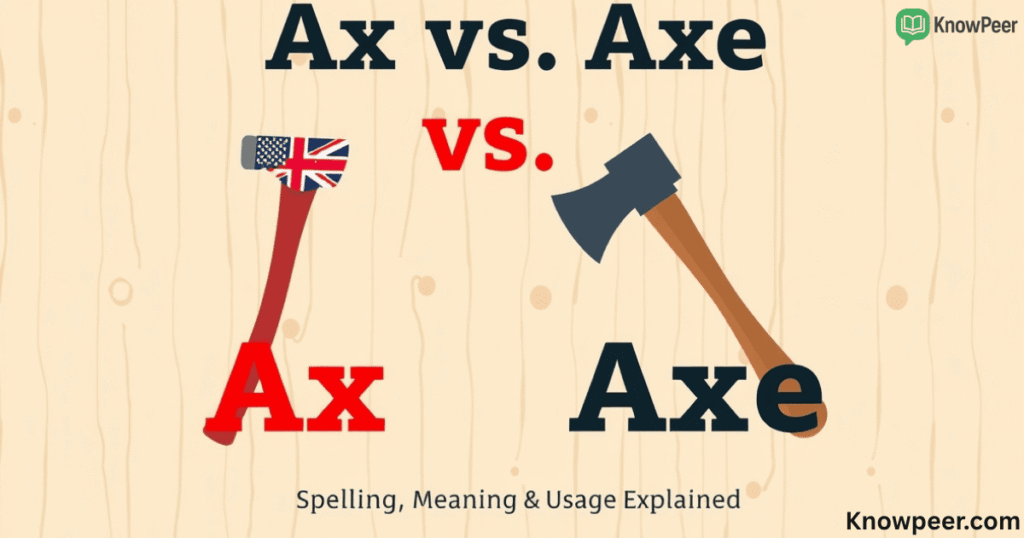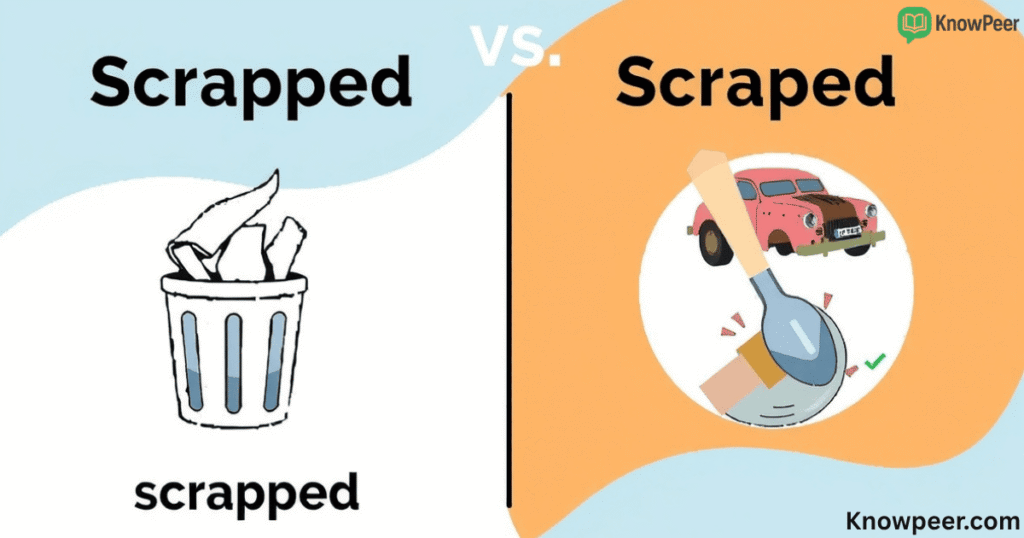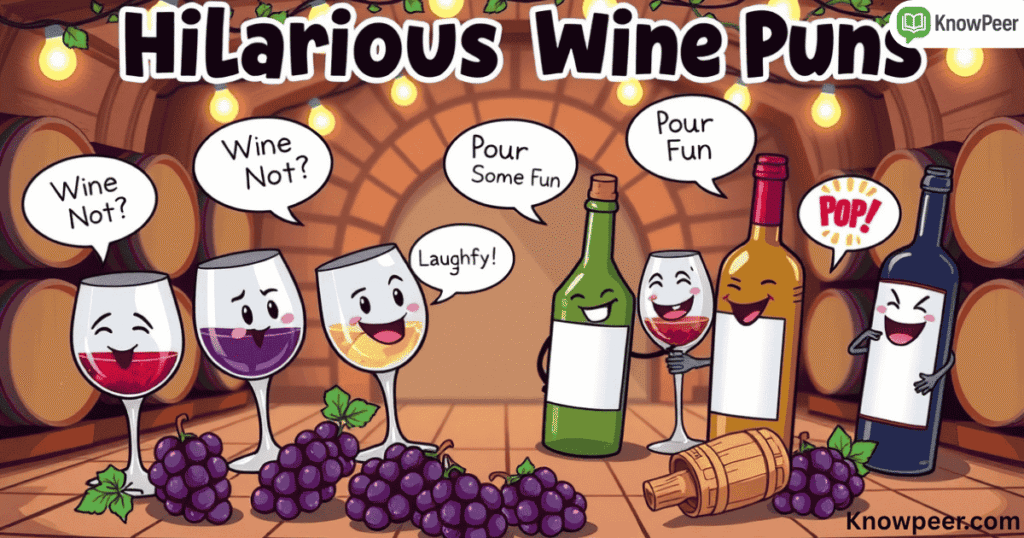Have you ever paused while writing and asked yourself, “Is it tying or tieing?” You’re not alone. Many people stumble when spelling the present participle of tie. This tiny spelling challenge causes confusion not only for English learners but also for native speakers Tying vs Tieing. Some even wonder, “Is tieing a word?” This confusion stems from unusual spelling patterns in English that don’t always follow predictable rules.
In this guide, you’ll discover the truth behind tying vs tieing, learn the correct spelling of tying, understand the grammar rules that make it correct, and find out why tieing is considered incorrect. You’ll also explore the meaning of tying, real examples, and related spelling patterns. By the end of this article, you’ll never hesitate on how to spell tie + ing again.
Tying or Tieing: Which One is Actually Correct?
The answer is simple: tying is the correct spelling. The word tieing is almost always incorrect and not accepted in standard English. Some people try to spell it with an extra e because it feels natural. After all, the base word is tie, right? But English doesn’t always play by simple rules. The correct present participle of tie is tying, not tieing. If you type tieing into most grammar checkers, they’ll flag it immediately.
The confusion comes from the structure of the word tie, which ends in ie. Normally, when you add -ing to a verb, you just attach it to the end. But not with verbs ending in -ie. That’s where a special spelling rule comes in. Once you learn this rule, you’ll understand why tieing doesn’t work.
The Rule Behind “Tying”: How the Spelling Changes
There’s a simple rule in English for verbs ending in -ie. When you want to add -ing, you first drop the -ie and replace it with -y. Then you add -ing to it. So tie becomes tying. This rule also applies to other verbs like die and lie. For example, you don’t say dieing, you say dying. You don’t write lieing, you write lying. The same goes for tie: the correct form is tying.
Here’s a quick look at the rule in a table:
| Base Verb | Incorrect Form | Correct Form |
| tie | tieing | tying |
| die | dieing | dying |
| lie | lieing | lying |
This is known as the ie to y spelling rule. It helps with verbs that end in -ie before adding -ing. This spelling change keeps the word easy to read and pronounce. If we kept the “ie”, it would make the pronunciation awkward.
What “Tying” Really Means in English
The word tying comes from the verb tie, which means to connect, fasten, or bind something using string, rope, or similar material. The present participle form—tying—shows an ongoing action. For example, you can say, “She is tying her shoes,” or “He’s tying the package with a ribbon.” This is a physical action verb.
But tying can also be used in non-physical or figurative ways. In writing or speaking, people may say things like “He’s tying ideas together” or “The two teams are tying in the game.” These examples show that tying isn’t only about rope or string—it also means linking or connecting in a broader sense.
Why “Tieing” Seems Right But Isn’t
You might still wonder why tieing feels like it could be right. After all, tie + ing = tieing, right? That’s how it works for most verbs. For example, walk + ing = walking or cook + ing = cooking. But tie is a special case. English has exceptions, and verbs ending in -ie follow different rules. So tie + ing becomes tying because of that ie to y rule.
Some also believe that tieing might be used in British English, but that’s not true. Across both American and British English, the correct spelling is always tying. You won’t find “tieing” in any trusted dictionary. It is a common English spelling error caused by regular logic that doesn’t apply here.
Other Verbs That Follow the Same Spelling Pattern

Understanding this spelling rule becomes easier when you look at other examples. Many verbs in English that end with -ie go through the same change before adding -ing. It’s not just a random quirk of one word. It’s a pattern with real structure.
Let’s look at more verbs that behave like tie:
| Verb | + ing Form | Correct Spelling |
| die | die + ing | dying |
| lie | lie + ing | lying |
| vie | vie + ing | vying |
| untie | untie + ing | untying |
You can see how the ie changes to y in each case. This is part of standard English spelling rules and not just something to memorize. When you understand this, you’ll improve not only with tying but with many other tricky verbs too.
Synonyms for Tying in Different Contexts
The word tying has many meanings depending on the situation. In physical settings, it means binding or fastening. In sports, it can mean reaching an equal score. In abstract writing, it means linking ideas. Knowing the synonyms of tying can help you express yourself more clearly Tying vs Tieing.
Some common synonyms for tying include binding, fastening, securing, connecting, linking, attaching, and joining. These words may not always replace “tying” directly, but they carry a similar idea. For example, in fashion, you might say, “She’s fastening the bow,” instead of “She’s tying the bow.”
Understanding synonyms helps you become more flexible with language. You learn to pick the best word for each situation.
Real Examples and Sentences Using Tying
Seeing tying in real sentences makes it easier to understand how to use it. It also helps you hear the rhythm of the word in natural speech. Here are examples from different settings:
1. In everyday life:
“She is tying a scarf around her neck.”
2. In sports:
“The player scored the tying goal in the final minute.”
3. In writing:
“He’s tying the two arguments together in his essay.”
4. In business:
“We are tying employee bonuses to company performance.”
5. In parenting:
“He spent the morning tying his child’s shoelaces before school.”
As you can see, tying works in many contexts. It’s a versatile and important verb in English.
Where Does “Tying” Come From? A Brief Etymology
The word tying has a long history in the English language. It comes from the base verb tie, which traces back to Old English. The original word was tīegan, which meant to bind, join, or fasten. This Old English word was closely linked to words from Old Norse and other Germanic languages. These languages used similar terms like taug or teohan, all carrying the core idea of pulling together or fastening.
Over time, as English evolved, so did its spelling and grammar rules. The present participle form, tying, came into use as English began adopting standardized forms for verb endings. Around the 17th and 18th centuries, grammar guides began formalizing spelling changes like the ie to y rule, which made “tie + ing” become tying. This change was made to improve pronunciation and visual clarity Tying vs Tieing. Even though English includes many irregular rules, this one became common and is now part of modern usage. The historical link between “tie” and “tying” shows how language naturally adapts for ease and consistency.
Why Spelling Tying Correctly Really Matters
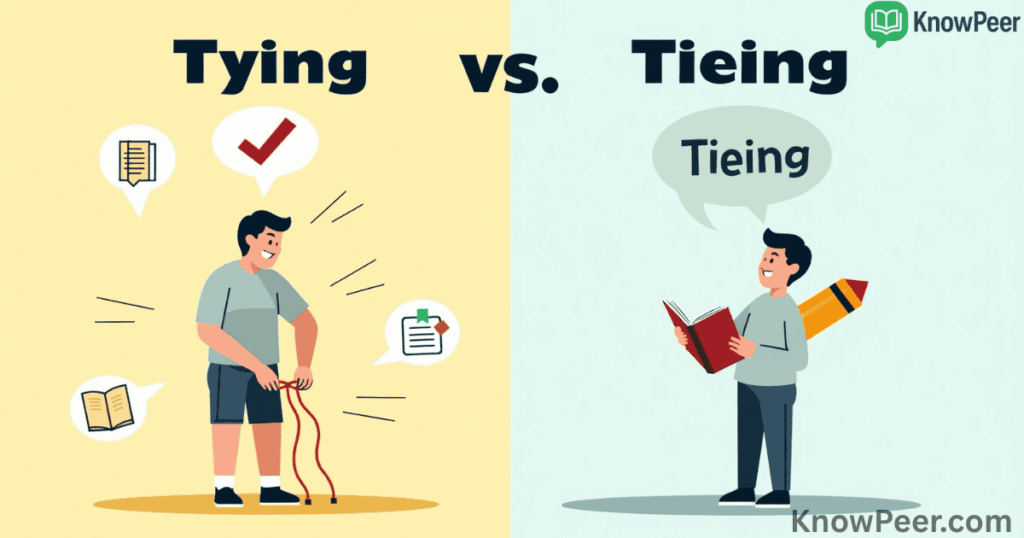
Some people may think spelling doesn’t matter as long as the meaning is clear. But in writing, first impressions count. Spelling a common word like tying incorrectly can make your work look unpolished. It may cause readers to pause or question your understanding. This is especially true in business writing, emails, or educational settings where clarity and accuracy are key.
Spelling also affects search engine optimization (SEO) and online visibility. If someone searches “how to spell tying,” and your blog says “tieing,” it may not show up in search results. This is why using the correct form of tie + ing—which is always tying—is important both for human readers and search engines.
Tying in Everyday Life: Real Examples and Uses
Let’s explore some real-life situations where tying is used. You’ll see how common this word is in both daily speech and writing.
Case Study: Tying in Sports
In sports commentary, phrases like “the tying run” or “the tying goal” are used often. For example, in soccer, you may hear: “He scored the tying goal just before the whistle.” This shows how tying is not only about physical binding but also about balancing or equaling something.
Case Study: Tying in Parenting
Think of a parent helping a child get ready for school. Every morning, they might say, “Hold still, I’m tying your shoes.” It’s a simple sentence, but it carries warmth and routine.
Case Study: Tying in Presentations
In business or education, people often say things like “Let me tie this point back to the main idea.” This is figurative tying—linking ideas to make them clear and connected.
These examples show that tying is more than a word. It’s a part of how we live, communicate, and express actions every day.
Final Thoughts
In the end, tying vs tieing doesn’t have to be confusing. Once you learn the rules for adding ing to tie, the answer becomes clear. The correct form is tying. Always. The spelling tieing may look like it fits, but it doesn’t follow English grammar rules. Understanding the tie present participle form, applying the -ie to -y rule, and practicing real examples will help you remember it.
Whether you’re tying shoelaces, tying ideas, or tying a score in a game, now you know how to use and spell the word correctly. Don’t let small doubts hold you back in writing. With a little knowledge, you can avoid common English spelling errors and feel confident with every word.
